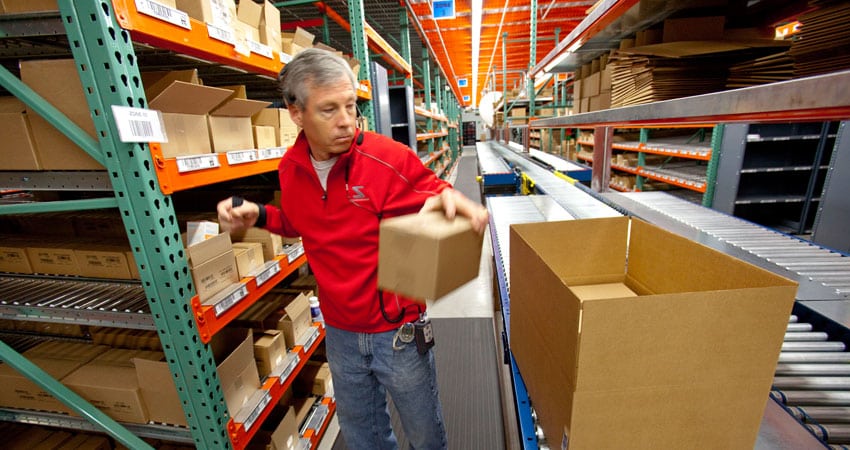Many fulfillment centers use a forward pick slot concept separate from bulk stock to store product and reduce the walk time in the picking process. Warehouse management system (WMS) software has greatly improved SKU replenishment functionality. However many businesses with older systems are more dependent on managing the replenishment tasks.
As we said in our recent blog, SKU replenishment along with slotting and inventory location control are the big three functions which if you take care of them generally your warehouse becomes more efficient.
However, if a picker goes to a designated pick slot to select an item and finds the slot empty, several things happen and they’re all bad. This condition is often known as a warehouse back order. Your system shows the product is in the warehouse but it’s not in the pick location. The picker is delayed and wastes time trying to find the product. The person doing the replenishment drops whatever they’re doing to fix the problem. The person in charge of slotting has to determine if a change is needed. The order filling is delayed until the right item is found and the order completed.
In really bad situations, the order ships incomplete and a second shipment is required after the item is found with shipping costs paid by you. There are other ramifications, but you get the idea. It’s critical to make sure enough of the right product is in the right location when needed.
There are two principal methods of controlling SKU replenishment. The most basic is to use a min-max concept to fill the primary pick slot. This establishes the point at which the slot should be refilled and the maximum quantity it will hold. The minimum quantity includes a safety stock level that gives you time to replenish the slot before it runs out but in a controlled, systematic manner. We recommend that the majority of SKU replenishments be completed using the min-max concept.
The other replenishment process calculates the demand for the item in a batch of orders and compares that to the quantity in the pick slot. If there is insufficient quantity to meet the demand, an emergency replenishment is called for. This can happen if there is an unusually high demand for an item. By combining this calculation with a scheduled min-max process, the best of both worlds can be achieved. If the warehouse pick slots are managed properly, the frequency of having to make emergency or hot SKU replenishments will be minimized. If these hot replenishments continue, a review of the slot size and the min-max criteria is in order.
Many warehouses employ a replenishment process called topping off or lean time SKU replenishment. This permits the replenishment and filling of pick slots when time is available even though replenishment has not been called for. This could also be done at the time of put away to avoid double handling of product. This will allow you to get ahead of the game and prepare for the next wave of picking.
One aspect of replenishment is to consider the scheduling of the function. If possible, replenishments should be completed when picking is not taking place. This will avoid congestion in the picking area and reduce safety risks with two functions occurring in the same space. You might consider having the replenishment team start work a couple hours in advance of the picking process or in the evening after picking.
Another focus of the replenishment process is to track all assigned SKU replenishments and ensure they have been completed. Manual replenishment systems still in use today require replenishment to be written on on a worksheet and keyed in at a later time, which can delay picking.
For warehouses able to employ barcode scanning, using it to verify or confirm replenishments are completed is a good application. It puts the action online and makes it more timely, reducing paperwork and increasing accuracy. Some older systems prevent the printing and processing of pick tickets until replenishment confirmation is received.
Effective replenishment combined with proper inventory location control can bring great efficiency and cost savings to your warehouse.
Brian Barry is President of F. Curtis Barry & Company

